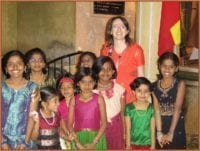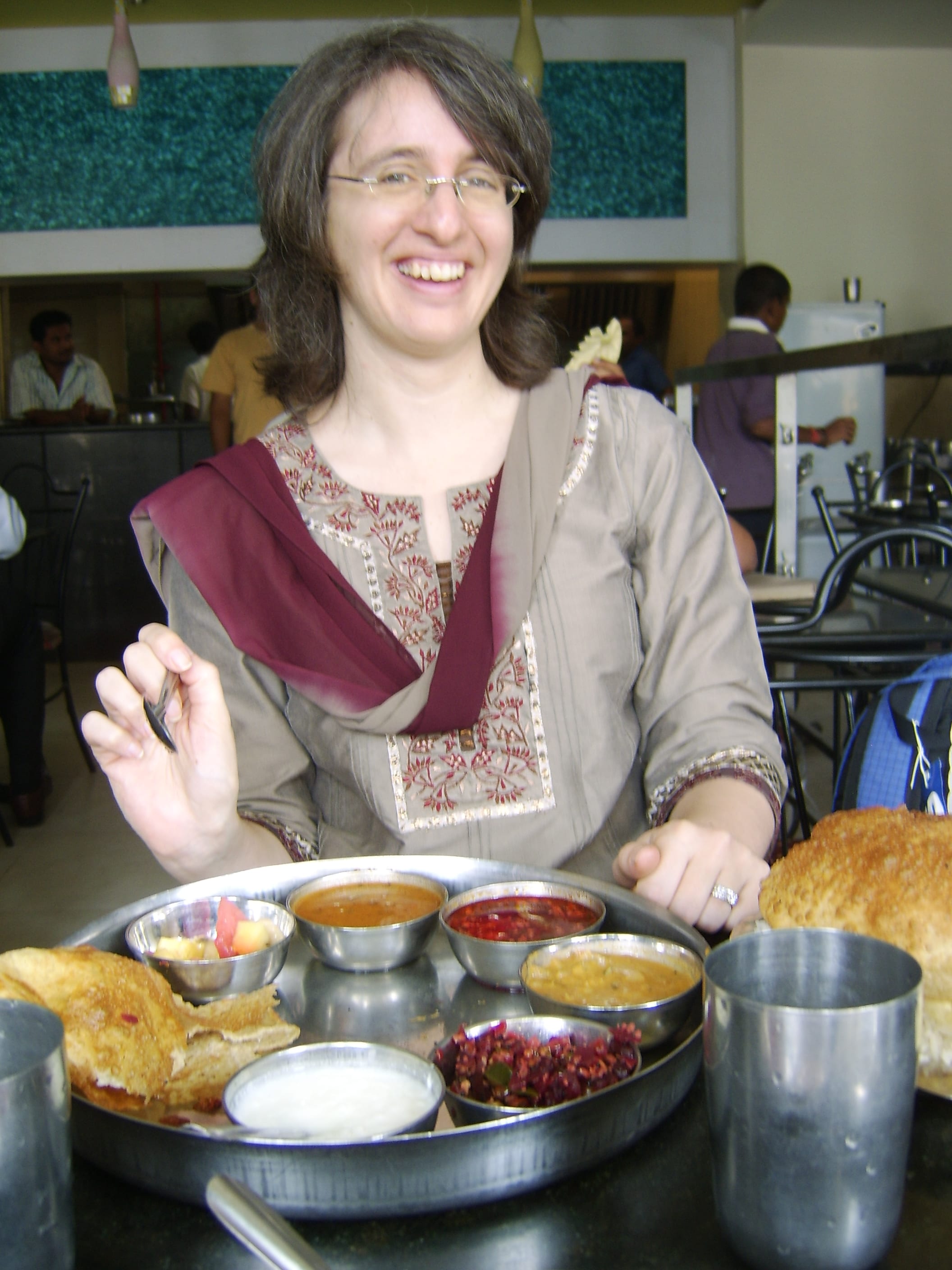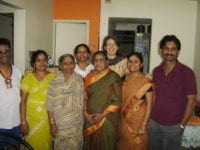In October of 1997 I touched down in India for the first time. My senses were spinning as I rode in a taxi from the Calcutta (now Kolkata) airport to the center of town. I saw colors swirling around me, tall gleaming buildings alongside vegetable sellers’ carts, a goat being carried in a basket, motorcycles with six people on them, brightly colored flowers, and so much more.
I could hardly believe I had arrived at last. I had wanted to travel to India since childhood, and there I was living my dream. Within hours of landing, however, I developed a tension within that never seemed to go away. I traveled by local train and bus from Calcutta all the way to the Thar desert near Pakistan, and back up into Northeast India. This took four months. Along the way I felt as though I was seeing the whole spectrum of humanity. One day I was delighting in India, walking a village road in Bihar with some of the families I had met, drinking tea with them and looking out over the bright green fields at sunset. The next day (or sometimes the next minute) I was frustrated with India, seeing the street children begging or being hassled by an auto rickshaw driver for the hundredth time that week.
This constant roller coaster had me in a tizzy. I kept asking myself, “How do I really feel about this country?” I couldn’t decide! I would praise India’s cultural values, and the very next minute see something that would shatter my illusions. Back and forth I went, questioning whether I was a clueless tourist who had no right to judge or a human being who felt angry when I saw something that I perceived as wrong.
The answer came to me one day in Varanasi, a city in North India regarded as a highly sacred place that draws many Hindus to bathe in the Ganges river. Having only about $5 a day to live on I had been staying in some pretty ratty accommodations, but that day my luck changed. I stepped into the guesthouse I would be staying in for the next week and found it spotless, welcoming, and peaceful. I climbed two flights of stairs to my room and gasped as I looked out the window. I could see the rooftops of the city, with children flying kites and monkeys leaping from building to building.
“I love India!” I cried out loud. The whole scene felt so free and romantic! I had no plans, nowhere to go, and no one telling me what to do.
I decided it was time for lunch, and with a huge smile on my face I headed toward the staircase. What I did not know was that while I was looking out the window with my rose-colored glasses, one of the guesthouse staff had come to oil the marble steps.
I took one step and slipped, tumbling down the entire flight of stairs and landing stunned at the bottom. I had a bruise on my leg the size of a grapefruit and a chipped elbow. I was so stiff and sore that I had a hard time getting up.
I wrinkled my face in contempt and said to myself, “I hate India!”
That’s when it hit me. Until that moment I had not learned to live in the gray zone, the zone where you allow all emotions to exist at the same time. I both loved and hated India; I was both homesick and wanted to stay forever; I had both admiration for India’s culture and struggles with things that I observed. I did not have to decide.
Why do we need to learn how to live in the gray zone? Because cultures and people are complex by nature. They are nuanced and complicated and surprising. Forcing either into an A or B trap, or into a black and white mode of thinking denies reality. This in turn could lead us to make decisions about how to interact with those cultures or people that are not suitable at best and harmful at worst. Living in the gray zone allows us to have more patience and flexibility, both with ourselves and others. It keeps us in observation mode longer and keeps us from making quick evaluations before gathering all of the information. Ambiguity is not always comfortable, but well worth learning to embrace.






